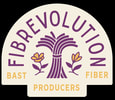|
Flax Puller on display at the Yamhill Valley Heritage Center in McMinnville, OR Oregon has a rich history of bast fiber production. In 1942 Oregon harvested 18,000 acres and produced 37,000 short tons of flax in 14 regional processing mills. Good soil and a cool, moist climate determined the quality and yield for flax and Oregon was leading the way around the world. Post WWII, Oregon was struggling to keep fiber flax profitable, as Europe’s flax industry was rebuilt. In 1951, a mere 2000 acres of flax was harvested and 3,400 short tons were produced. 10 out of 14 processing facilities had shut their doors. The development of synthetic fibers, exploited labor forces in the South growing cotton, and the lack of a consistent grading system, all contributed to the decline of flax production. Once it’s main customer, the US military, was not engaged in war, the push for fiber independence was lost. Today, there are no bast fiber processing facilities left in the Pacific Northwest.
Fibrevolution has been growing fiber flax in the idyllic Lobster Valley of Western Oregon's coastline for over 4 years. We believe that this crop will create a much needed niche industry within our community. We have been in conversation with local universities, historical societies, regional farmers, organic inspectors, activists, artisans, designers and anyone who will listen...believing that as a collective community, we will be able to bring this niche crop back to the Pacific Northwest! Please follow us as we pull our collective wisdom together, get our hands dirty and grow regional cloth!
2 Comments
Leave a Reply. |
AuthorWrite something about yourself. No need to be fancy, just an overview. Archives
August 2023
Categories |
STRATEGIC ECONOMIC DEVELOPMENT CORPORATION Member |
